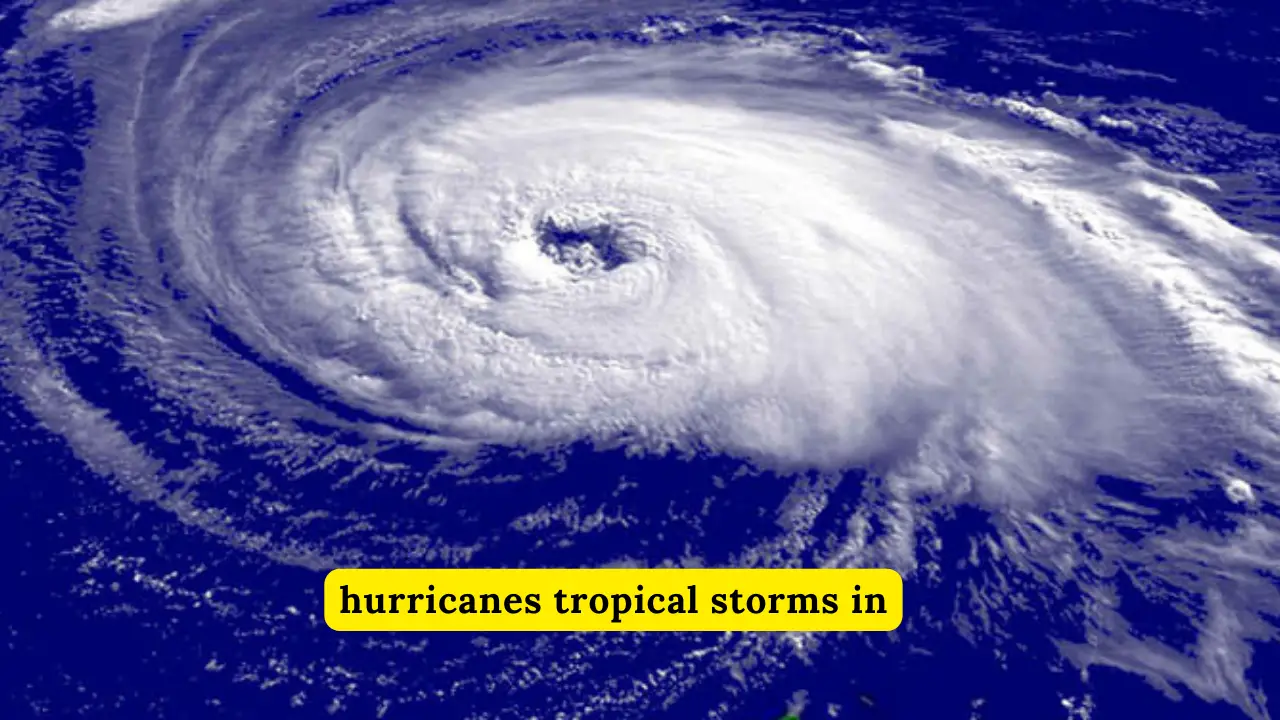
Hurricanes and Tropical Storms
Hurricanes are powerful tropical storms that form in specific oceanic regions, including the southern Atlantic Ocean, Caribbean Sea, Gulf of Mexico, and eastern Pacific Ocean. These storms are known for their destructive potential, bringing strong winds, heavy rainfall, and flooding to affected areas. In this article, we explore the nature of hurricanes and tropical storms, their formation, impact, and the measures taken to mitigate their effects. Hurricanes and Tropical Storms
What Are Hurricanes and Tropical Storms?
Definition and Characteristics
Hurricanes, also known as cyclones or typhoons in other parts of the world, are intense tropical storms characterized by:
- Strong Winds: Sustained winds exceeding 74 mph (119 km/h).
- Heavy Rainfall: Torrential rains that can cause flooding.
- Storm Surges: Elevated sea levels that result in coastal flooding.
- Low Pressure Systems: A central low-pressure area known as the eye.
Tropical storms are less intense than hurricanes, with wind speeds ranging from 39 to 73 mph (63 to 118 km/h). However, they can still cause significant damage, particularly through heavy rains and flooding.
Formation of Hurricanes and Tropical Storms
Stages of Development
The formation of a hurricane involves several stages:
- Tropical Disturbance: A cluster of thunderstorms forms over warm ocean waters.
- Tropical Depression: The disturbance begins to show a well-defined circulation, and wind speeds increase to between 25 and 38 mph (40 to 61 km/h).
- Tropical Storm: The system is named, and wind speeds increase to between 39 and 73 mph (63 to 118 km/h).
- Hurricane: When wind speeds exceed 74 mph (119 km/h), the storm is classified as a hurricane.
Conditions for Formation
Several key conditions are necessary for the formation of hurricanes:
- Warm Ocean Waters: Temperatures of at least 80°F (27°C) provide the energy needed for storm development.
- Low Wind Shear: Minimal changes in wind speed and direction with height allow the storm to organize.
- High Humidity: Moist air supports the development of thunderstorms.
- Coriolis Effect: The rotation of the Earth helps to spin the storm and create a cyclonic structure.
Impact of Hurricanes and Tropical Storms
Destructive Power
Hurricanes and tropical storms can cause widespread destruction, including:
- Wind Damage: High winds can destroy buildings, uproot trees, and down power lines.
- Flooding: Heavy rains and storm surges lead to significant flooding, particularly in coastal areas.
- Landslides: Saturated soils on slopes can give way, causing landslides.
- Economic Losses: The damage to infrastructure, homes, and businesses results in substantial economic costs.
Historical Examples
Some of the most devastating hurricanes in history include:
- Hurricane Katrina (2005): Caused over 1,800 deaths and $125 billion in damage, primarily in New Orleans.
- Hurricane Maria (2017): Severely impacted Puerto Rico, causing over 3,000 deaths and significant infrastructure damage.
- Hurricane Sandy (2012): Affected the Caribbean and the eastern United States, causing $70 billion in damage.
Mitigation and Preparedness
Forecasting and Warnings
Advancements in meteorology have improved the forecasting of hurricanes, allowing for timely warnings and preparations. Agencies like the National Hurricane Center (NHC) track and predict storm paths, issuing advisories to inform the public.
Preparation Measures
Communities in hurricane-prone areas are encouraged to take several preparedness measures:
- Emergency Kits: Stock essential supplies, including food, water, medications, and important documents.
- Evacuation Plans: Know the local evacuation routes and have a plan for where to go.
- Home Protection: Install storm shutters, reinforce roofs, and secure outdoor items to minimize damage.
- Stay Informed: Monitor weather updates and heed warnings from local authorities.
Response and Recovery
In the aftermath of a hurricane, response efforts focus on rescue operations, providing aid, and restoring infrastructure. Recovery can be a lengthy process, involving rebuilding homes, businesses, and communities.
Conclusion
Hurricanes and tropical storms are formidable natural phenomena with the power to cause extensive damage and disrupt lives. Understanding their formation, impact, and the importance of preparedness can help mitigate their effects and enhance community resilience. As climate change continues to influence weather patterns, ongoing research and improved forecasting will be crucial in managing the risks associated with these powerful storms.






